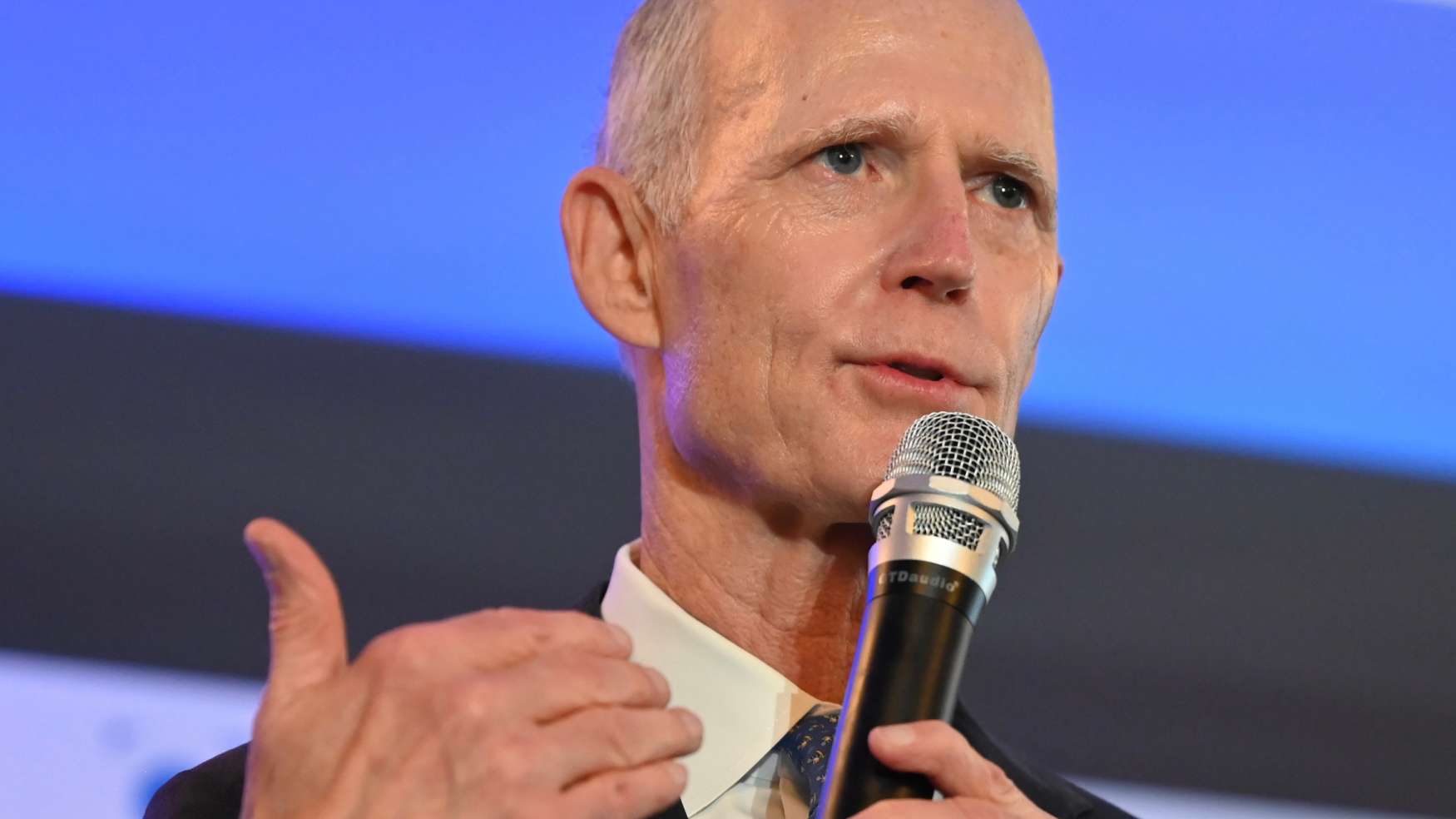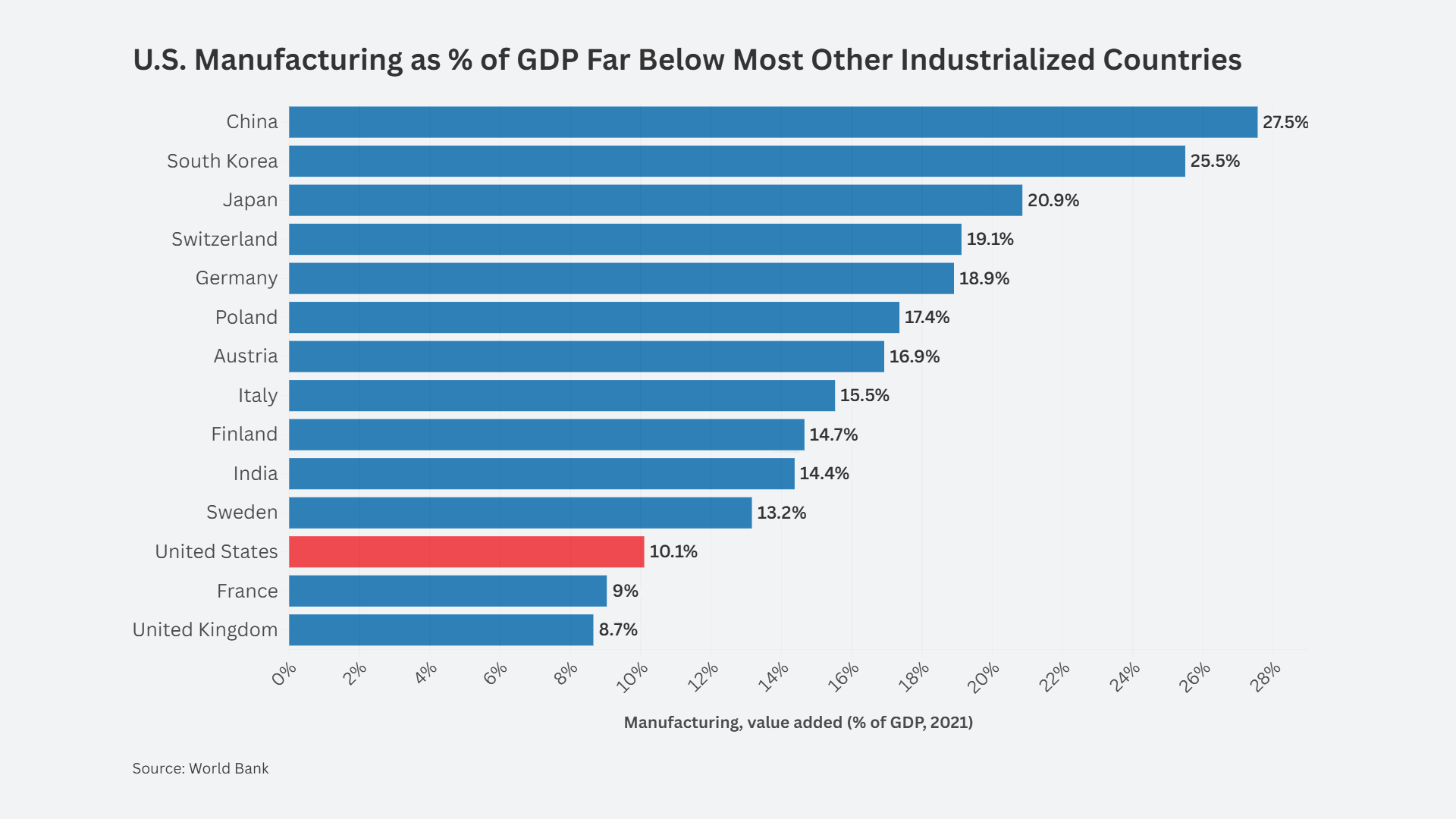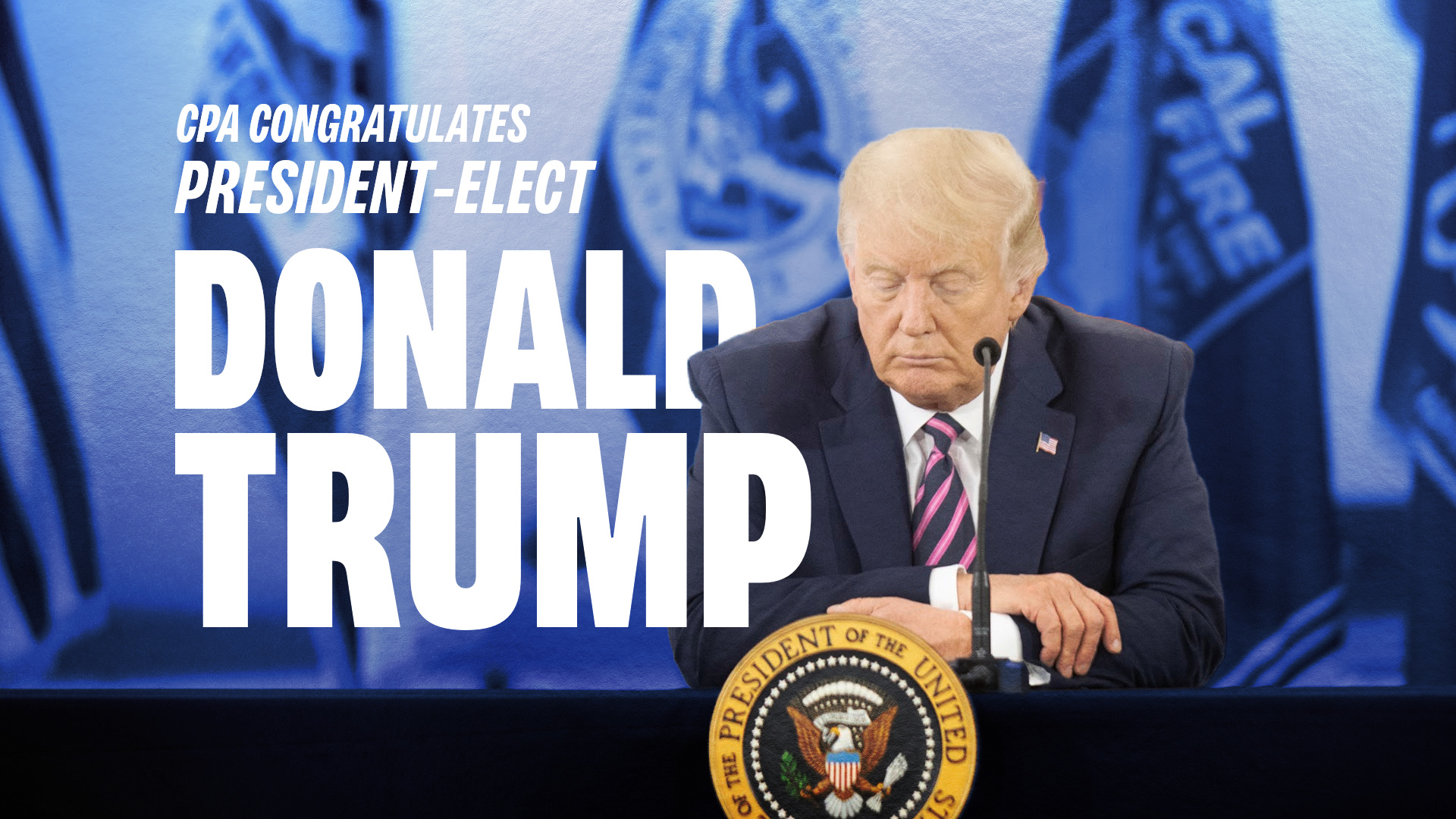Global Rebalancing Will Lead to Global Prosperity
European leaders and the media are up in arms over recent U.S. policy decisions to support the reshoring of American industry. The export ban on advanced U.S. semiconductor equipment, the tax credits for renewable energy equipment made in the U.S., and especially the support for American-made electric vehicles and batteries has upset them.
Criticism has come from European Union (EU) auto executives. French president Emmanuel Macron (above, right) called the Inflation Reduction Act a “killer for our [automotive] industry.” (Exactly how many Peugeots do you see on our streets, apart from when you are watching the 1970s Peter Falk TV series Columbo on classic cable?) Last week, The Economist magazine joined the fray, calling America “protectionist,” and raging that by deciding to extend subsidies for reshoring, the U.S. is “fracturing” the international trading system and leading to an allegedly dangerous situation in which “Free Trade is dead.” Perish the thought. It’s enough to make you reach for a bottle of cognac.
The irony is rich. The U.S., the alleged “protectionist” nation, is the world’s largest importer, with goods imports last year of $3.2 trillion. The average U.S. tariff level is 2.3%, one of the lowest in the world and below the EU level of 3.2%. If you look at tariffs on specific products, the EU tariff on imported automobiles is 10%. The U.S. tariff is 2.5%. And they call us protectionist?
As for subsidies, the Inflation Reduction Act promises $369 billion of government support over the next ten years to support climate-related industries. If you add the $53 billion of the Chips Act to that, you get government support of about $42 billion a year. The EU spends 55 billion euros ($59B) each year on its Common Agricultural Policy alone. On top of that comes billions of euros spent and planned to be spent by the 27 EU member governments to support their national EV, lithium-ion battery, wind power, and other industries.
However, the Economist is correct that what it calls the “open-trading system” and the “rules-based order” is coming apart. But this system began to fall apart 21 years ago, and it was blind to the “beggar thy neighbor” impact that persistent trade surplus countries impose on deficit countries. The roots of the problem were inherent in the foundation of the system. The Bretton Woods agreement of 1944 and the GATT Agreement of 1947 provided for no penalty for nations that abused the system by running persistent surpluses. This became visible as a problem as early as the 1960s, when some nations began to run persistent surpluses.
But the problem escalated enormously when China joined the WTO in 2001. Over the last 20 years, China has used a full arsenal of measures to ensure that it runs a permanent trade surplus and builds up its industrial base at the expense of most of the rest of the world. China overproduces and underconsumes, forcing unemployment and deindustrialization on its trading partners.
China’s arsenal of trade-distorting, beggar-thy-neighbor policies include billions of dollars of subsidies, much of it disguised in the form of loans from (state-owned) Chinese banks, grants and loans from provincial governments, an undervalued currency, forced labor and oppression of the Uyghur community in the Xinjiang province, violations of labor standards, restrictions on imports into China along with subsidies for exports, and more.
The U.S. has borne the brunt of these flagrant violations of the global trading system, in the form of steady deindustrialization, millions of manufacturing job losses, thousands of businesses closing, and devastated cities and towns across the heartland. China recently reported that in 2022 it ran a record trade surplus of $878 billion. As usual, the U.S. trade deficit mirrors the China trade balance, with ours in the red while theirs is in the black. When our December figures are published in a couple of weeks, our global trade deficit is likely to reach some $950 billion, with a goods trade deficit of around $1.2 trillion. All these figures will set records: the Chinese surplus will be the largest surplus ever recorded in world history and the U.S. deficit likewise.
But the EU has also paid the price for China’s flagrant self-aggrandizing trade policies. In 2021, the EU ran a 189 billion euro ($204B) trade deficit with China, a record for that bilateral trade account, and more than double the figure of just seven years ago. The 2022 EU-China deficit will likely be even worse. A very important offset for the EU’s trade deficit with China has been its ability to run a large trade surplus with the U.S., in large part because of the undervalued euro currency and the various national and EU-level subsidy programs. In 2021 its surplus with the U.S. was $219 billion according to U.S. Census data and $157 billion according to EU data. Whichever data source you prefer to believe, the U.S. plays a vital role in the health of EU export industries and the ability of EU governments to hold down unemployment. EU exports to the U.S are led by the automotive and pharmaceutical industries.
European leaders know from experience that complaining to the Chinese government about its trade practices is a waste of effort. China’s policy is to listen politely, and do nothing, exploiting the slow-moving bureaucracies of the WTO and other international organizations. But European leaders know from experience that screaming and political pressure on the U.S. can produce dividends because many U.S. political leaders have cared more about foreign policy or pleasing the cost-cutting U.S. multinationals than jobs or prosperity in the heartland. The Economist article cited above dredged out some has-been “free trade” bureaucrats from Bush and Obama days to reiterate their out-of-date platitudes urging the U.S. to follow the rules that China won’t.
But times have changed in the U.S.
Productivism: Production Beats Consumption
Harvard economist Dani Rodrik recently coined the term “productivism” for a new economic policy paradigm which puts a priority on production instead of consumption. The underlying economic logic is simple: boosting consumption, especially of imports, may provide for immediate voter/consumer gratification but does nothing to boost the long-term capacity of that population to generate the goods and services which are the true sources of income and wealth. Boosting production, especially over multiple years, is far more important than boosting consumption. And boosting a nation’s income and wealth must be the number one economic objective of any democratically elected government.
Here is Rodrik’s explanation of productivism, from an article last July:
“A new bipartisan consensus may be emerging around `productivism’ which emphasizes the dissemination of productive economic opportunities throughout all regions and all segments of the labor force…It puts less faith in markets, is suspicious of large corporations, and emphasizes production and investment over finance, and revitalizing communities over globalization. Productivism also departs from the Keynesian welfare state by focusing less on redistribution, social transfers, and macroeconomic management and more on supply-side measures to create good jobs for everyone.”
This marks out the agenda for the U.S. government for the next decade, and beyond. Production here at home will bring about long-term prosperity and economic growth. This is the surest way to deliver persistent gains in real income for the working poor and the middle class. Even the nonworking will profit from this growth because voters will be more likely to support redistributive policies if they can see an upward path for their own incomes.
The complaints of The Economist and others are based on a false conception of economics. “Economies of scale” (the claim that it is cheaper to concentrate production in one place) is the cry of businesses that have lost the ability to innovate. Toyota defeated General Motors with smaller factories in many locations. Tesla too understands that “right-sized” factories are better than huge factories. And that is even before we consider the national security issue of making the entire world dependent on a single far-off nation like Taiwan.
Today’s “hot” industries, including EVs, renewable energy equipment, and microchips, are already multi-billion dollar markets in each of the three major regions, the U.S., Europe, and Asia. Each of those regions can support multiple profitable businesses within their region. Each regional government can choose its own policies to support regional production. This will maximize national security, global security of supply, technological progress, jobs and investment in that region.
And by the way, if you feel the need for a snifter of cognac after reading these weighty economic thoughts, you will be a lucky soul if you are reading this in the U.S. rather than China. The Chinese tariff on fortified wines imported from France ranges from from 14% to 65%, and on top of that the Chinese importer must pay 17% VAT. The U.S tariff on imported cognac is precisely zero.
A votre sante, President Macron.













